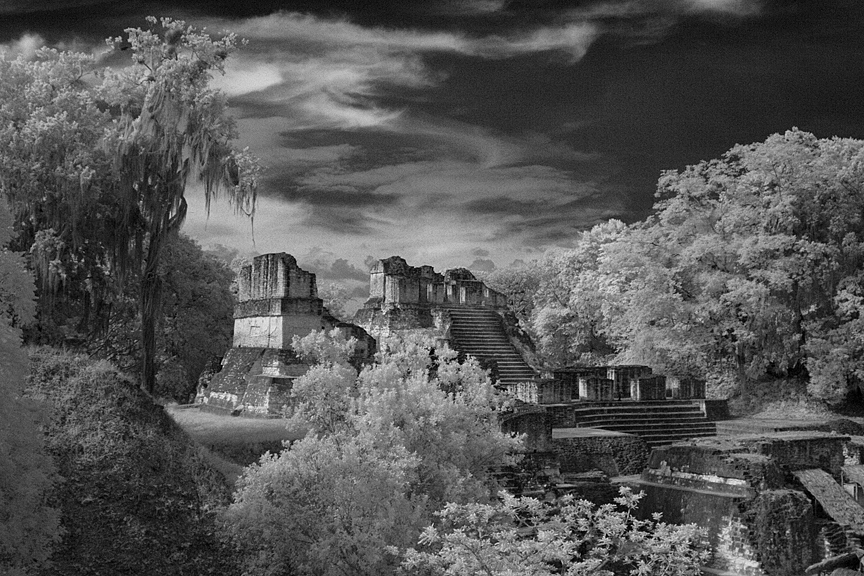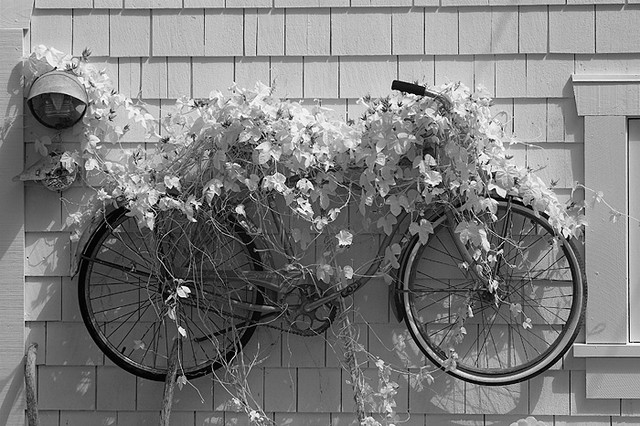IR Cameras
Canon, Nikon, Sony and Other Converted IR Cameras!
To go directly to our IR-Only Camera section of our store, please click here.

Depending on the camera model, we offer many different types of camera conversions including UV-VIS-IR, UV-Only, IR-Only, Remote Sensing Vegetation Stress, Monochrome and High Resolution (HR) cameras. Some of the conversions have further subsets such as IR-Only at 590nm, 630nm, 665nm, 715nm and 830nm. Not all conversions are available for all cameras because each conversion typically requires the manufacture of custom optics. If you have a particular requirement, please let us know.
With an IR-Only camera, you have the internal IR Cut Filter (ICF) and Anti-Aliasing filter (AA) removed and replaced with a long-pass infrared filter window. The advantage of an IR-Only camera for taking pictures is that you don't need to add additional filters to your lenses, Auto Focus and Auto Exposure work and you can see through your lens normally if you have a DSLR. You can use a more restrictive IR filter on your lens if you wish, but you may lose AF, AE, won't see through your lens - except that most DLSR have Live View. You can use Live View to see through an IR filter on the lens since Live View allows you to see on the LCD back whatever the image sensor sees. If you have a 715nm IR-Only camera, you can still put an 830nm IR filter on the lens since the 830nm filter is a subset of the 715nm filter. If you have a 715nm filter and put on a 630nm filter on the lens, you will still have a 715nm picture because 715nm is a subset of 630nm.
Choosing the right sort of IR-Only camera depends on your personal preferences and what you wish to achieve. As you go to a lower cutoff filter, you gain in the ability to do creative color work between the color channels and the camera sees more light. However, because the camera sees a wider bandwidth of light, most lenses will have more chromatic aberration making the picture not as sharp. As you move to 1000nm, the picture will get sharper, the sky will be darker, the clouds lighter, the light rays are less scattered by smoke and haze, pictures tend to look more dramatic, but you lose stops of exposure and by 830nm, your camera is 99% monochrome once you equalize the color channels.
With a UV-VIS-IR camera you have the greatest number of options because you can use a wide variety of filters on your lenses. But then you need to buy filters for your lens and if you lenses with different diameters, then you need more filters.
With a monochrome camera, the camera will gain in spatial detail, but will lose all color detail. The reason for gaining spatial detail is that the typical sensor uses a Red-Green-Blue-Green 4 pixel arrangement called the Color Filter Array (CFA). The CFA is photolithography printed on top of a monochrome photodiode. The CFA is an array of optical filters. So for every 4 pixels, only one sees blue. That means that if you take a picture of a pure blue object, only 1 in 4 pixels can see anything while for a monochrome camera, all pixels can see object. For a UV-Only monochrome camera, the camera gains about 6x more sensitivity because most of the UV light is blocked by the CFA and the microlenses which are small bubble lenses that help concentrate light to the photodiode.
Cameras generally have similar sensitivities to UV, Visible and IR light because they are all built from silicon. You will see differences in thing like pixel size which determine the photon well size and dynamic range, sophistication of the electronics and such, but, all other things being equal, general sensitivities are similar. If you compare the qualities of a stock camera with another stock camera, those same traits will carry through to a converted model.
While most sensors are now CMOS, there is not a basic quality or sensitivity difference between CMOS and CCD sensors. Back when CMOS sensors where first made, there was often a quality difference, but this was because the CMOS sensors had smaller pixels. A CMOS sensor is more expensive to design because more of the support electronics is on the actual sensor. Before we know how to make electronics smaller, we started with CCD's because we could design as much on one chip. In volumes, CMOS sensors make for a less expensive camera because you don't need as much support electronics. When CMOS sensors first came out, they had to sacrifice sensor pixel real estate for the support electronics. If you look at the surface of a current CMOS sensor, the pixels stand edge to edge with each other.
For UV sensitivity, there is no basic difference between CMOS and CCD, and there is no difference between Canon and Nikon. Nikon once made some special UV lens back in the film days, but that has nothing to do with the current digital cameras. BTW, those old Nikon lenses are still being made but under another company name Tochigi Nikon. Other UV lens suppliers are Jenoptik (formerly Coastal Optics) and Universe Kogaku. For a UV-Only camera, you should strongly consider a monochrome UV-Only camera because sensitivity increases by about a factor of 6x. You can often use a standard camera lens for UV-Only but sensitivity is typically 1/2 of a UV lens. A standard lens typically passes UV to about 360nm.
We have been converting cameras since 1997, so if you have a camera that you would like to convert, contact us and see if it is one that we have done. We still have custom glass made for DSLR's as old as the Canon 10D and Nikon D100.

We have many types of IR sensitive cameras
- Digital Still Cameras (NTSC & PAL in same camera, DSLR and Point & Shoot)
- USB 2.0 and 3.0 Industrial cameras with C-Mount Lenses
- Camcorders (Handicams/Handicams). NTSC only.
- Ultra-Small Lipstick/Bullet IR Camera. NTSC only. COLOR and Black & White
- IR Board Camera with self IR LED Illumination. NTSC only
- Outdoor weatherproof camera with IR illuminators
- Indoor camera with IR illuminators and audio
- UV + Visible + Infrared USB Microscope
- For Ultraviolet (UV) cameras, please click here.
A normal digital camera camera can see from about 400nm to 650nm. Our modified cameras can see from about 280nm to 1200nm. The infrared range right above the visible range (750nm to 1200nm) is also call the Near Infrared (NIR). Because image sensor sensitivity is reduced at the extremes, practical range is approximately 325nm to 1100nm.
Our visible / NIR cameras have been used in many scientific, industrial, educational, professional photography and security fields. Viewing plant stress, searching for mineral deposits, analyzing museum pieces, forgery analysis, surveillance, factory automation and thousand of other applications are possible with our cameras. Kodak used to sell the visible/NIR cameras DCS420IR and DSC460IR, but have discontinued their production. If you have a particular application and need assistance, please ask us.
Thermal cameras see in the Mid IR (MIR) or Far IR (FIR) range. Cameras seeing the 8-14 micron range are FIR cameras versus MIR cameras which see in the 3-6 micron range. Thermal cameras use a completely different type of technology from consumer digital cameras and camcorders. Consumer cameras can see heat, but only temperatures past 600 DegF. We have had customers use modified consumer cameras to take pictures of very hot objects in order to gauge temperatures such as inside large furnaces.
If you want to see room temperature heat, you need a thermal camera. You cannot see room temperature heat with an NIR camera that has a CCD or CMOS image sensor. This includes all of the Sony cameras, cameras with NiteShot, bullet cameras and Nikon cameras.
A quick note about some misinformation long on the internet about testing cameras for infrared sensitivity: Using an infrared remote control to test for IR sensitivity is not accurate. All color digital cameras have ICF because the CFA opens up in the IR and the photodiodes are IR sensitive. However, no ICF is 100% perfect so a little IR leaks past. The IR remote control pulse the IR LED at very high levels. If you point the remote directly into the camera, you can usually see the IR LED's pulsing. However, this is not the same thing as having an IR sensitive camera. Point the remote and the camera at your hand, and you will not see your hand light up from the IR LED's.
If you want us to convert your camera, please fill out a conversion request form.
